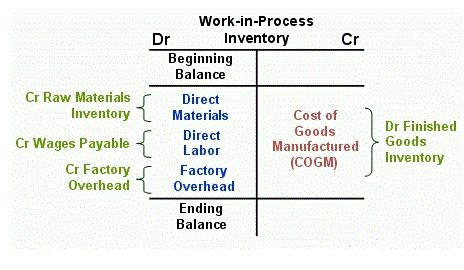
They would also need to look at regulatory requirements, government policy, market conditions, financial performance, management and operational strategies, and the internal controls the company has put in place. Inherent risk is generally a risk of financial statement errors or omissions that have taken place outside of the organisation’s internal controls. This type of risk is prevalent in highly complex, data-intensive and challenging transactions and financial accounts. Audit risk is the risk that an audit opinion is incorrectly issued, and it has come from a leak of internal control over financial reporting, poor audit audit risk model quality, and inherent risks. Audit Risk Model is a tool that is used by the auditors in order to understand the relationship between various risks that exist during the normal course of the audit process. This particular model suggests that the total risk that exists over the course of the audit is a factor of three risks, inherent risk, control risk, as well as detection risk.
What is an Audit Risk Model?

It may include activities such as searching for software glitches, assessing users’ rights, or checking encryption use. The income summary integration also helps in following guidelines from other frameworks, such as ISO or PCI DSS, while decreasing the likelihood of penetration. In conclusion, audits assist in harmonizing staff, processes, and technology for the best defense mechanisms.
Audit Risks Model and Calculation:
For example, a company that has complex business transactions involving financial instruments is more susceptible to inherent risk as compared to another company that has relatively simple transactions. Usually, the more complex and dynamic a company and its transactions are, the higher the inherent risks involved will be for the audit process. Inherent risk is the risk that financial statements contain material misstatement before consideration of any related controls.

What Are the Three Types of Audit Risk?
The first version of ISA 315 was originally published in 2003 after a joint audit risk project had been carried out between the IAASB, and the United States Auditing Standards Board. Changes in the audit risk standards have arguably been the single biggest change in auditing standards in recent years, so the significance of ISA 315, and the topic of audit risk, should not be underestimated by auditing students. The assessment of inherent risk requires a thorough understanding of the financial statements and transactions being reviewed. In addition, the auditor must also consider the control risk and detection risk when assessing the financial statements. This ensures that the financial statements are free of material misstatement, and that the financial position of the company is accurately reported. A systematic approach to risk assessment can help to identify any potential risks and take steps to mitigate them.
- Detection risk is the risk that auditors fail to detect the material misstatement that exists in the financial statements.
- Where the auditor’s assessment of inherent and control risk is high, the detection risk is set at a lower level to keep the audit risk at an acceptable level.
- It is the second one of audit risk components where auditors usually make an assessment by evaluating the internal control system that the client has in place.
- For example, auditors issued an unqualified opinion to the audited financial statements even though the financial statements are materially misstated.
- Auditors keep themselves educated and trained to address the latest risks that could lead to material misstatements in the financial statements.
Based on the audit standard, the auditor needs to assess the risks of fraud that might happen and the materiality. Let’s assume you already have a better understanding of audit risks and let’s check the above if you are still not sure. For example, having enough team members and those team members have good experiences and knowledge related to the client’s business and financial statements. Mostly, COSO frameworks are the popular frameworks that use by most international audit firms to document and assess internal controls. If the client’s internal control seems to be strong, the audit needs to confirm if the control is working by testing internal control.
#1 – Inherent Risks
- When facing a security audit requirement, confirm that the requirement truly is a requirement.
- Cybersecurity spending was around $87 billion in 2024, up from $80 billion in 2023, showing how much organizations rely on protective measures.
- Unqualified audit opinions state that financial statements are presumed to be free from material misstatements.
- If auditors believe that the client’s internal control can reduce the risk of material misstatement, they will assess the control risk as low and perform the test of controls to obtain evidence to support their assessment.
- It would be inefficient to address insignificant risks in a high level of detail, and whether a risk is classified as a key risk or not is a matter of judgment for the auditor.
Inherent risk refers to the risk that could not be protected or detected by the entity’s internal control. This risk could happen due to the complexity of the client’s nature of business or transactions. They also study the trend of balance or transactions of accounting items in the financial statements over a period of time to see if the change is normal or not and if there are any risks of misstatement related to the change. Or the qualified opinion is issued as the result of immaterial misstatement found in financial statements, which the correct opinion should be unqualified since the fact is financial statements are materially misstated. Regardless of the fact that in most cases, these risk values are not easily quantifiable, auditors are supposed to use their professional judgement in order to assess the underlying risk involved. There are often other descriptive statistics that are used in order to ascertain the level of risk involved.
What is Auditing? – Overview, Types, Opinions, Processes, And More
When facing a security audit requirement, confirm that the requirement truly is a requirement. Depending on the relationship with your partner or vendor, there could be room to discuss and understand what is driving a new requirement. Once you have additional context, it is time to evaluate which framework makes the most sense for you. Despite organizations employing firewalls and encryption in their networks, new threats keep emerging from time to time. A security audit often identifies vulnerabilities such as unpatched software, users with excessive privileges, or insufficient logging. As a result, auditing firms have malpractice insurance to mitigate audit risk and potential legal liability.

Similar to inherent risk, auditors cannot influence control risk; hence, if the control risk is high, auditors may need to perform more substantive works, e.g. test on a bigger sample, to reduce the audit risk. Audit risk always exists regardless of how well auditors planned and performed their audit tasks. However, auditors can reduce the level of risk, e.g. by increasing the number of audit procedures. Additionally, audit risk will be low if the audit is well planned and carefully performed.
How does a building security audit differ from a Cyber Security Audit?
While an external audit doesn’t provide an absolute guarantee against fraud, it’s a popular — and effective — antifraud control. You can facilitate the fraud risk assessment by anticipating the types of questions we’ll ask and the types of audit evidence Grocery Store Accounting we’ll need. Forthcoming, prompt responses help keep your audit on schedule and minimize unnecessary delays.